Transcriptomics of Hirschsprung disease patient-derived enteric neural crest cells reveals a role for oxidative phosphorylation
- PMID: 37061531
- PMCID: PMC10105741
- DOI: 10.1038/s41467-023-37928-5
Transcriptomics of Hirschsprung disease patient-derived enteric neural crest cells reveals a role for oxidative phosphorylation
Abstract
Hirschsprung disease is characterized by the absence of enteric neurons caused by the defects of enteric neural crest cells, leading to intestinal obstruction. Here, using induced pluripotent stem cell-based models of Hirschsprung and single-cell transcriptomic analysis, we identify a gene set of 118 genes commonly dysregulated in all patient enteric neural crest cells, and suggest HDAC1 may be a key regulator of these genes. Furthermore, upregulation of RNA splicing mediators and enhanced alternative splicing events are associated with severe form of Hirschsprung. In particular, the higher inclusion rate of exon 9 in PTBP1 and the perturbed expression of a PTBP1-target, PKM, are significantly enriched in these patient cells, and associated with the defective oxidative phosphorylation and impaired neurogenesis. Hedgehog-induced oxidative phosphorylation significantly enhances the survival and differentiation capacity of patient cells. In sum, we define various factors associated with Hirschsprung pathogenesis and demonstrate the implications of oxidative phosphorylation in enteric neural crest development and HSCR pathogenesis.
© 2023. The Author(s).
Conflict of interest statement
The authors declare no competing interests.
Figures
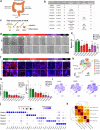

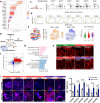

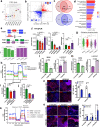
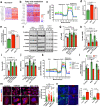
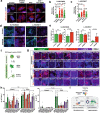

Similar articles
-
Identification of GLI Mutations in Patients With Hirschsprung Disease That Disrupt Enteric Nervous System Development in Mice.Gastroenterology. 2015 Dec;149(7):1837-1848.e5. doi: 10.1053/j.gastro.2015.07.060. Epub 2015 Aug 7. Gastroenterology. 2015. PMID: 26261006
-
Roles of Enteric Neural Stem Cell Niche and Enteric Nervous System Development in Hirschsprung Disease.Int J Mol Sci. 2021 Sep 7;22(18):9659. doi: 10.3390/ijms22189659. Int J Mol Sci. 2021. PMID: 34575824 Free PMC article. Review.
-
Up-Regulation of microRNA-424 Causes an Imbalance in AKT Phosphorylation and Impairs Enteric Neural Crest Cell Migration in Hirschsprung Disease.Int J Mol Sci. 2023 Apr 4;24(7):6700. doi: 10.3390/ijms24076700. Int J Mol Sci. 2023. PMID: 37047673 Free PMC article.
-
Correction of Hirschsprung-Associated Mutations in Human Induced Pluripotent Stem Cells Via Clustered Regularly Interspaced Short Palindromic Repeats/Cas9, Restores Neural Crest Cell Function.Gastroenterology. 2017 Jul;153(1):139-153.e8. doi: 10.1053/j.gastro.2017.03.014. Epub 2017 Mar 23. Gastroenterology. 2017. PMID: 28342760
-
The developmental etiology and pathogenesis of Hirschsprung disease.Transl Res. 2013 Jul;162(1):1-15. doi: 10.1016/j.trsl.2013.03.001. Epub 2013 Mar 22. Transl Res. 2013. PMID: 23528997 Free PMC article. Review.
Cited by
-
Three distinct classes of myenteric ganglia in mice and humans: insights from quantitative analyses.PeerJ. 2025 Apr 24;13:e19329. doi: 10.7717/peerj.19329. eCollection 2025. PeerJ. 2025. PMID: 40292108 Free PMC article.
-
The roles of non-coding RNAs in Hirschsprung's disease.Noncoding RNA Res. 2024 Feb 28;9(3):704-714. doi: 10.1016/j.ncrna.2024.02.015. eCollection 2024 Sep. Noncoding RNA Res. 2024. PMID: 38577013 Free PMC article. Review.
-
Decreasing Proprotein Convertase 5 Causes Hirschsprung's Disease by Disrupting Neural Crest Cell Migration.Cell Mol Gastroenterol Hepatol. 2025;19(8):101518. doi: 10.1016/j.jcmgh.2025.101518. Epub 2025 Apr 17. Cell Mol Gastroenterol Hepatol. 2025. PMID: 40252721 Free PMC article. No abstract available.
-
TNF-α disrupts the malate-aspartate shuttle, driving metabolic rewiring in iPSC-derived enteric neural lineages from Parkinson's Disease patients.bioRxiv [Preprint]. 2025 Mar 26:2025.03.25.644826. doi: 10.1101/2025.03.25.644826. bioRxiv. 2025. PMID: 40196623 Free PMC article. Preprint.
-
Depletion of muscularis macrophages ameliorates inflammation-driven dysmotility in murine colitis model.Sci Rep. 2023 Dec 17;13(1):22451. doi: 10.1038/s41598-023-50059-7. Sci Rep. 2023. PMID: 38105266 Free PMC article.
References
Publication types
MeSH terms
Substances
LinkOut - more resources
Full Text Sources
Miscellaneous

